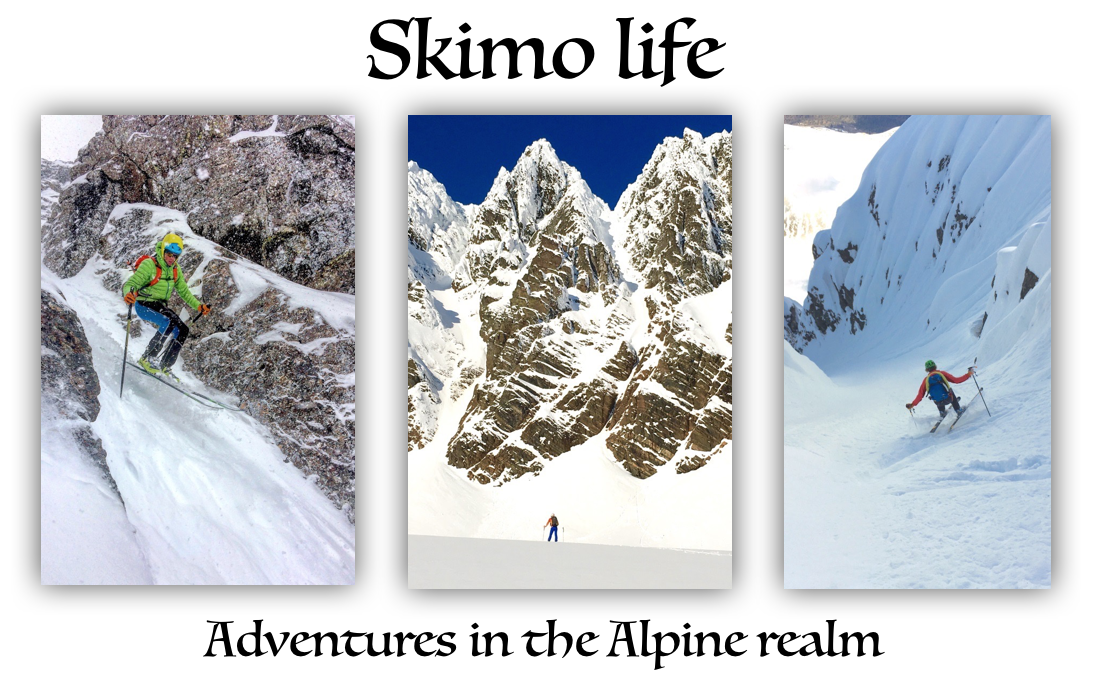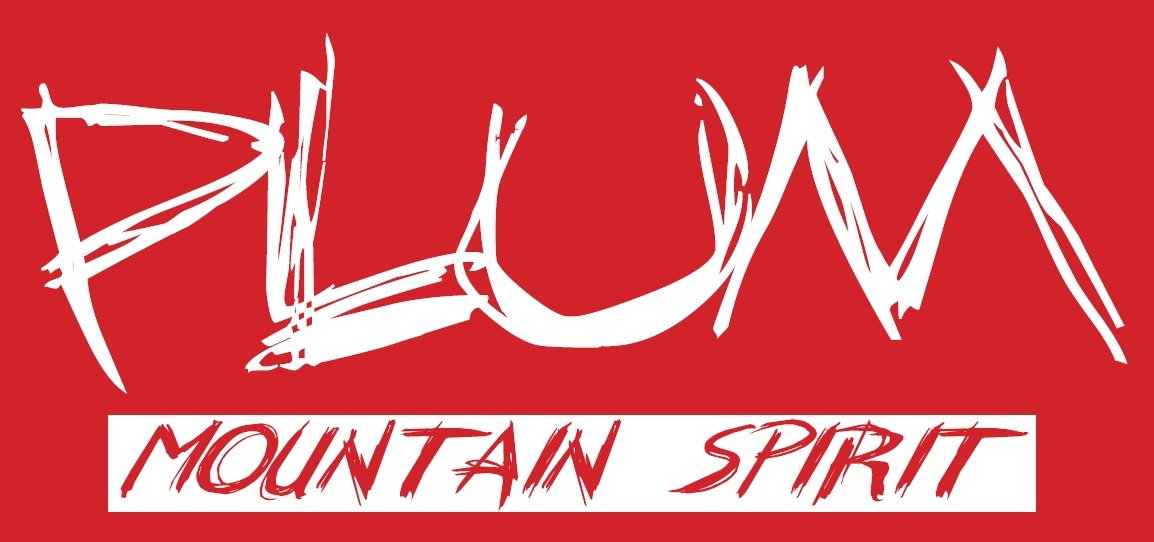Stuff I Like - Black Crows Furtis Poles
 Monday, March 14, 2016 at 11:57PM
Monday, March 14, 2016 at 11:57PM Fixed poles, choking up, Euro styleLike a lot of essential back country ski gear, pole choice is nearly completely dictated by the popular brands seen at every gear store. In the US, Black Diamond seems to dominate the field with a variety of offerings. All them are adjustable and BD has developed numerous incarnations of the adjustment mechanism because, well, they often suck at some point. More on that later. In Europe, there are more options, some adjustable, some fixed. If you can break the spell of the former, you may be tempted by the latter.
 These babies are circa 1985, or so.My first pair of backcountry ski poles (above) were made by Chouinard Equipment, the predecessor to Black Diamond. These were heavy duty aluminum, fixed length poles that had a couple of thoughtful features. One was a directional breakaway pole strap that allowed your arms to stay attached to your shoulders should a pole snag on a tree while skiing fast. The other was the ability to unscrew the grips and then screw the two poles together to fashion a long avalanche probe. Cutting edge stuff at the time. I still have them and love to break them out on the rare days I lift ski. Shows my age.
These babies are circa 1985, or so.My first pair of backcountry ski poles (above) were made by Chouinard Equipment, the predecessor to Black Diamond. These were heavy duty aluminum, fixed length poles that had a couple of thoughtful features. One was a directional breakaway pole strap that allowed your arms to stay attached to your shoulders should a pole snag on a tree while skiing fast. The other was the ability to unscrew the grips and then screw the two poles together to fashion a long avalanche probe. Cutting edge stuff at the time. I still have them and love to break them out on the rare days I lift ski. Shows my age.
After these, I joined the herd of lemmings and bought numerous adjustable poles from Black Diamond, Smith and Life Link. No matter that the finicky mechanisms failed, slipped or froze at some point, I had to have ‘em like everybody else. I’ve snapped both carbon and aluminum versions of said poles. More comically, while hacking at a cornice at the top of a steep couloir, I flung half my pole down the run as the locking mechanism failed. Lovely. But for some reason I continued to use them even though I rarely adjusted them at all.
To say that I’ve been less than enamored with these designs is an understatement. A few years ago I was exposed to the European answer to adjustable poles - fixed length poles with long grips. This allows the skier to choke up on the pole on side hills and boot packs as needed without fiddling with thumb tweeking locking mechanisms. These poles tend to be more robust and reliable in almost all situations.
 My favorite in this genre is made by the Chamonix-based boutique ski maker, Black Crows. No longer a Europe only company, Black Crows is quietly gaining a following on this side of the Atlantic, importing skis and poles for the discriminating consumer. Their flagship pole, the Furtis, is a thing of beauty. First, the pole is STOUT. You’re simply not going to break it. I even hung a single pole up and did a pull up on it to prove my point. Broken poles in the backcountry can lead to serious epics. With these poles in hand, I don't give it a second thought.
My favorite in this genre is made by the Chamonix-based boutique ski maker, Black Crows. No longer a Europe only company, Black Crows is quietly gaining a following on this side of the Atlantic, importing skis and poles for the discriminating consumer. Their flagship pole, the Furtis, is a thing of beauty. First, the pole is STOUT. You’re simply not going to break it. I even hung a single pole up and did a pull up on it to prove my point. Broken poles in the backcountry can lead to serious epics. With these poles in hand, I don't give it a second thought. Hanging from the older aluminum FurtisThe utility of this quality is that you can use it as a deadman belay or rappel anchor.
Hanging from the older aluminum FurtisThe utility of this quality is that you can use it as a deadman belay or rappel anchor.  The new composite Furtis. Try this with your Flick Locks, homies!Additionally, the long grip does not feature the typical ergonomic grip seen in nearly all other poles. The beauty of this is that the pole can be easily plunged vertically into the snow when transitioning, probing snow layers or for use as a climbing aid when pulling over the top of steep chutes.
The new composite Furtis. Try this with your Flick Locks, homies!Additionally, the long grip does not feature the typical ergonomic grip seen in nearly all other poles. The beauty of this is that the pole can be easily plunged vertically into the snow when transitioning, probing snow layers or for use as a climbing aid when pulling over the top of steep chutes.  Easy plunging with the straight gripsThis year’s version is made of composite but is no less dependable and drops the weight from 314 grams to 253 grams for the 125 cm length. It also comes with a pivoting basket for less shearing on steep slopes and a tungsten carbide tip.
Easy plunging with the straight gripsThis year’s version is made of composite but is no less dependable and drops the weight from 314 grams to 253 grams for the 125 cm length. It also comes with a pivoting basket for less shearing on steep slopes and a tungsten carbide tip.
 Aluminum (L) and the new composite Furtis (R)
Aluminum (L) and the new composite Furtis (R)
 New pivoting basket (bottom)Like so many equipment options deemed “necessary” by American skiers, whether it be impossibly fat skis, 4-buckle boots, platform bindings or adjustable poles, the truth lies in the alternatives and Black Crows Furtis poles are one such option I don’t leave home without.
New pivoting basket (bottom)Like so many equipment options deemed “necessary” by American skiers, whether it be impossibly fat skis, 4-buckle boots, platform bindings or adjustable poles, the truth lies in the alternatives and Black Crows Furtis poles are one such option I don’t leave home without.
 Brian |
Brian |  10 Comments |
10 Comments |  Black Crows Furtis poles in
Black Crows Furtis poles in  Gear
Gear 





Reader Comments (10)
Nice post, always interested in your take. Do you use the straps or not? Also, given your time in high-risk fall terrain, are you ever likely to use Whippets (good)?
Hey Thom,
Thanks for reading and commenting. Always good to keep the discussion going.
Pole strap use is worth discussing, for sure. Obviously, using them in avalanche situations creates some liability. If the poles are attached to your wrists, it may be harder to swim with your arms or get your hands in front of your face during a burial. Poles, like skis, can be like anchors in that situation.
On the other hand, in steep terrain, dropping a pole can create a whole new set of problems. Also, during transitions in steep terrain, the straps are handy for securing poles when you need to have your hands free.
During a recent trip to Canada, the guide asked us to not use straps. The Furtis strap is easily removed so I decided to go strapless for the week. In some ways, I liked it. It felt super clean and elegant. I liked being able to shift my hands about unfettered. But afterwards, I just couldn't get around the risk of dropping a pole in some steep couloir somewhere so I decided to put the straps back on. I feel more secure having the option. Also, on long poling sections of flat terrain, straps are indispensable.
As for the Whippet, that's nearly a complete post in and of itself. The short answer is that I think they are WAY overused by most backcountry skiers and if you're using them while skiing powder then you haven't a clue. For steep, firm situations, they can certainly create an illusion of security which may get you through a tough patch. But if it's that sketchy, I want a real tool, anyway. Additionally, the idea of self-arresting with one is nearly comical to consider, although I know people who have done so in rare instances.
For me, I find them heavy, bulky and mostly unnecessary. I certainly wouldn't want to fall on one and suffer the embarrassing impalement that would follow. I also can't help but look to my steep skiing heroes in the Alps who simply don't use them or their ilk. Again, a real tool is brought out when conditions warrant. My sense is that some skiers use them in terrain where sharper skiing skills would be more appropriate and effective than a Whippet. But ultimately, it's a personal choice, style be damned. Shit, I hop turn when it gets steep. Who am I to judge?
Nice post.
I've gone through a similar evolution and now my adjustable poles are just gathering dust.
I feel like the discussion of using poles straps or not on suspect slopes has been blown out of proportion. In my mind it is strange how everyone is quick to say that you shouldn't use pole straps, but then they tramp across a slope with their tech bindings in lock mode... If one is that uncertain about a slope's stability then maybe its time to ski a different slope, and if you are skinning without pole straps for safety reasons then maybe you ought to be skinning with unlocked toe pieces too.
On the topic of whippets: a few seasons back I noted that simply strapping a camp corsa axe to my pole with a voile strap before skiing something steep and firm was both more confidence inspiring, more versatile (I can carry the tool on my pack for 90% of the outing, when it isn't needed) and actually slightly lighter than the whippet. (430g for a whippet vs. 395g for a 135cm fixed length dynafit nanga parbat pole with the camp corsa). Fransson seemed to ski mostly with a grip around both the pole and his tool- I guess he had big hands!
Kaj,
I agree on all counts. Adjusting behavior for something that is highly unlikely if you're using your head seems tedious. But you know that there are those out there that will simply stress about that rare possibility and behave as if it's inevitable. Like I said, personal choice. I simply like playing the odds.
Indeed, Fransson must have had big mitts because I've tried that technique and I've always felt like I'm going to drop the tool or pole. Your solution is one I've considered but have never actually done. I pondered making some special velcro straps for the task but haven't gotten around to it yet. Maybe I will now.
Thanks for weighing in.
Great post Brian...despite the selfies in your underwear. :)
I still use a 20 year old pair of Lekis that also screw into an avy probe. I usually still carry an avy probe to make my partner feel safer, but honestly, my thoughts are that if they are buried deeper than one pole length, we have big problems anyway.
I'm going to be bummed when these finally bend and crack. Does anyone know of a company selling a model that turns into a probe?
I also like using the straps to secure the poles when doing something spicy. Hopefully I will know this ahead if time and already have my harness on for belaying/rappelling/etc, at which point I'll just attach them through my ice screw biner thingy (I guess BD has a proper name for that). Anyway, thought about cutting them off and just using parachute cord instead but not sure the weight savings would be worth the time and effort.
Thanks.
Come on now. Those are running shorts!
I actually rigged my BC poles with a short loop of p-cord so they'd still be very low profile but have an option to girth hitch a loop of webbing as a wrist strap for flat skinning. The single screw at the end of the pole for fixing the stock wrist straps makes this easy. But in the end, I like using straps more than not. Just comes down to personal preference. I've actually started skiing down more without them just to see if I could learn to do so without dropping them.
Can you comment on lengths? I typically ascend and descend with 135cm but love 145 or 150 for double poling long exits. When running fixed length with long grips where do you settle at? Relative lengths would be find: ~normal, long (normal +~5cm), double pole (normal +10-15cm)...also, how does this compare to skimo race length?
i like the look of these poles but can't imagine not going adjustable in the backcountry. i like long poles on the skintrack 145 and medium poles on the down 125. any time i'm crossing a frozen lake or a meadow any extra length seems crucial for efficient skating, in fact i usually wish my poles could go longer than 145.
It's all about compromise, Jay. There is no perfect solution. If you can't imagine it then don't bother. For me, what I give up for the flats is more than compensated for on the down in terms of durability and simplicity. All adjustables fail at some point. I've had most brands over the years. It's one of those things you think you can't live without until you do.
Aaron,
Sorry for the delay. Must have missed the question.
I use the 125cm. I'm about 6ft. For more race poles, I use a 131cm. It's probably a bit shorter than some of my peers but it feels better for the down having them a few cms shorter.
A better skier than me once told me I'd be better off with shorter poles for general descending and tend to agree. I could get away with 120 for sure. But the 125 works fine and is long enough for exits. I'm willing to give up the ridiculously long nordic style length that are so nice for skating to have a single length that I can count on.